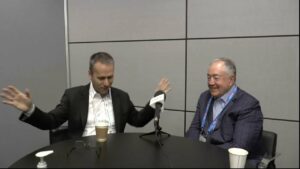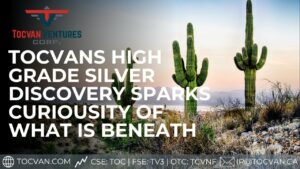TAMPA, Fla., Sept. 9, 2014 (GLOBE NEWSWIRE) — Odyssey Marine Exploration, Inc. (Nasdaq:OMEX), a pioneer in the field of deep-ocean exploration, reported that the Environmental Impact Assessment (EIA) for proposed dredging and recovery of phosphate sands from the "Don Diego" deposit has been filed with the Mexican Secretary of Environment and Natural Resources (SEMARNAT). According to governmental regulations, a response is expected in approximately 60 business days.
Experts in marine dredging, plume modeling, sound propagation, ecotoxicology, phosphate research and engineering all contributed to the extensive environmental studies and scientific findings that were incorporated in the EIA.
The unique attributes of the "Don Diego" deposit, particularly its size, quality and location, make it an important strategic resource and place it among the top-tier of new world phosphate deposits. As recently announced, the Mexican government awarded two additional concession areas that increase the size and value of the "Don Diego" project.
Phosphate is a key and irreplaceable component of fertilizer. Mexico imported 83% of the fertilizer it used in 2013 and still only six million hectares of the 23 million hectares available for food crops are currently fertilized regularly in Mexico. Nearly 40% of the food consumed in the country is imported.
A stated key focus for Mexico's President Nieto is his national crusade against hunger (SinHambre), and central to this initiative is for Mexico to identify and secure lower cost sources of fertilizer. This new source of phosphate can be crucial to increased food production in the country and could turn Mexico into a phosphate exporter.
Given the project's importance to Mexico and all of North America, significant time and effort was invested in review of the EIA by additional scientific experts, environmental groups, local fishing groups, community leaders and potential strategic partners prior to submission to SEMARNAT. The 4,600 page EIA includes annexes that present extensive analyses, tests, reports and models from outside experts and environmental scientists on the proposed program to extract the phosphate sands. It is expected that the full EIA submission will be available on the SEMARNAT website in the coming days. A non-technical summary of the EIA is available now on www.odysseymarine.com.
"The 'Don Diego' project team has produced an extraordinary amount of high-quality work leading to this very thorough environmental assessment," said Mark Gordon, Odyssey's president and chief operating officer. "Offshore operations began with environmental and resource sampling and data collection conducted by Odyssey, which then continued with independent land-based laboratory testing and scientific analyses. This work has confirmed that the 'Don Diego' phosphate deposit is a strategically and economically significant resource, and its development will have minimal environmental impact while creating an overwhelmingly positive social and economic benefit for Mexico."
"The extensive pre-submission review by various stakeholders has extended the development timeline," continued Gordon. "However, the investment of additional time and resources better positions the project for success, and we are looking forward to moving another step closer to beginning mineral extraction operations."
While the "Don Diego" concession area stretches to the shoreline, the proposed dredging area covers a significantly smaller region in waters 70-90 meters deep and centered about 40 kilometers offshore. The high phosphate band is located in the Mexican Exclusive Economic Zone (EEZ), but outside of territorial waters, and the proposed dredging plan covers less than 1% of the current concession area per year. The proposed project area is a distinct deposit that features very high phosphate content.
The submitted EIA includes the following information:
- The project area features a low level of sea life and biodiversity. The area where the proposed dredging will take place is known locally to the fishermen as "Los Lodazales" or "mud pits" because the phosphate-rich material is relatively inhospitable to benthic fauna and therefore is not an area frequented by local fishermen seeking bottom fish.
- The proposed extraction methodology uses standard Trailer Suction Hopper Dredging (TSHD), a method that has been used worldwide for decades for maintenance dredging, reclamation works and dredging marine aggregates for use in construction. The impacts of TSHDs have been extensively studied in European waters and elsewhere. The project's dredging partner has conducted over 200 dredging projects in Mexican waters over the past 20 years.
- During the extraction process and offshore processing, no chemicals are introduced into the ocean. Phosphate is extracted by mechanical means and only shells, oversized materials and fine sediment are returned to the seabed in a manner that creates structure, which studies have shown to enhance local fish populations.
- Plume modeling indicates that minor increases in suspended solids from dredging operations will occur over a distance of less than four kilometers from operations even during high-energy events such as storms. In addition, this project plans to use a "green valve" system that results in the plume being carried below the depths at which the majority of phytoplankton production occurs.
- Extensive toxicity testing was conducted to determine the impact of any suspended solids from the activities on marine organisms. These tests showed that there was no evidence of damaging impact on any of the test organisms.
- Testing indicated that water quality from the extraction process discharge met Californian and Mexican standards for water quality for all measurable trace minerals.
- Sound propagation modeling studies indicates that the dredging activities are expected to produce sound frequencies and decibel levels comparable to other similarly sized vessels that are commonly in transit off the west coast of Baja California Sur. This would have no more effect on cetaceans than smaller vessels, including those used for whale watching. The results show that sound levels in all cases are well below those known to cause damage to marine life.
- The dredging area is not in migration paths for either blue whales that migrate further offshore or humpback whales that migrate much closer to shore than the deposit. The project area is also a considerable distance from whale calving areas in Bahia Magdalena and Lagoon San Ignacio, and will have no effect on whales or other sea life in those areas.
- Turtle impact is expected to be minimal, as turtles do not typically frequent the waters in the depth and area of the proposed dredging as there is minimal food available in this "mud pit" area. Nonetheless, mitigation measures, including tickler chains and deflectors, that have had excellent success rates in other areas are proposed in order to ensure that if any turtles are in the area they will not be entrapped or harmed by the operation.
Dr. Richard Newell, a leading environmental consultant, was involved in the provision of independent scientific advice for this project. He possesses extensive experience with studies on the environmental impact and management of dredging by Trailer Suction Hopper Dredgers (TSHD) for the marine aggregates sector in the UK. Between 2002 and 2011, he was the marine science coordinator for a $50 million research program funded through the UK Government Department for Environment, Food and Rural Affairs (Defra) known as the Aggregate Levy Sustainability Fund (ALSF).
According to Newell, "The knowledge we derived from the results of work funded through the ALSF has been brought to bear on the 'Don Diego' TSHD project, and leading independent expertise from the UK dredging industry has played a central role in the assessment of potential impacts. I am satisfied that this work and the interpretation of the data meets the high international standards that are expected for a project of this significance."
Phosphate is a key and irreplaceable component of fertilizers, and the location of the "Don Diego" deposit makes it an attractive potential sourcing site for fertilizer companies in the Americas, Pacific Rim and Asia. The relatively shallow depth of the deposit and minimal-to-no overburden will allow the use of existing standard dredging ships and equipment.
As previously reported, the most recent NI 43-101 compliant "Technical Report: Revised Assessment" concludes that the measured and indicated phosphorite resources at the "Don Diego" deposit total 327.2 million ore tonnes at 18.5% P2O5, which represents an increase of 20% over the previous preliminary assessment total of 273.5 million ore tonnes. The latest assessment also adds 166.4 million inferred ore tonnes at 18.9% P2O5 to the measured and indicated resource assessment. Further increases in the measured and indicated quantity of the deposit are expected when results from the two additional exclusive mining concession areas are calculated.
About Odyssey Marine Exploration
Odyssey Marine Exploration, Inc. (Nasdaq:OMEX) is engaged in deep-ocean exploration using innovative methods and state of-the-art technology for shipwreck projects and mineral exploration. Odyssey currently owns 54% of the outstanding shares of subsidiary, Oceanica Resources S. de. R.L.(Oceanica). Oceanica owns Exploraciones Oceanicos, S. R.L. de CV, the Mexican operating company with the mining concession containing the Don Diego phosphate deposit.
For additional details about Odyssey, please visit www.odysseymarine.com. The company also maintains a Facebook page athttp://www.facebook.com/OdysseyMarine and a Twitter feed @OdysseyMarine. For additional details on Odyssey Marine Exploration, please visitwww.odysseymarine.com.
Cautionary Note to U.S. Investors
The U.S. Securities and Exchange Commission (SEC) permits mining companies, in their filings with the SEC, to disclose only those mineral deposits that a company can economically and legally extract or produce. We use certain terms in this press release, such as "ore" "measured" "indicated," and "inferred" "resources," which the SEC guidelines strictly prohibit us from including in our filings with the SEC. "Inferred mineral resources" have a great amount of uncertainty as to their existence, and great uncertainty as to their economic and legal feasibility. It cannot be assumed that all or any part of an inferred mineral resource will ever be upgraded to a higher category. U.S. investors are cautioned not to assume that part or all of the inferred mineral resource exists, or is economically or legally mineable, and urged to consider closely the disclosures in the our Form 10-K which may be secured from us or from the SEC's website athttp://www.sec.gov/edgar.shtml.
Forward Looking Information
Odyssey Marine Exploration believes the information set forth in this Press Release may include "forward looking statements" within the meaning of the Private Securities Litigation Reform Act of 1995, Section 27A of the Securities Act of 1933 and Section 21E of the Securities Act of 1934. Certain factors that could cause results to differ materially from those projected in the forward-looking statements are set forth in "Risk Factors" in Part I, Item 1A of the Company's Annual Report on Form 10-K for the year ended December 31, 2013, which was filed with the Securities and Exchange Commission on March 17, 2014. The financial and operating projections as well as estimates of mining assets are based solely on the assumptions developed by Odyssey that it believes are reasonable based upon information available to Odyssey as of the date of this release. All projections and estimates are subject to material uncertainties, and should not be viewed as a prediction or an assurance of actual future performance. The validity and accuracy of Odyssey's projections will depend upon unpredictable future events, many of which are beyond Odyssey's control and, accordingly, no assurance can be given that Odyssey's assumptions will prove true or that its projected results will be achieved.
CONTACT: MEDIA CONTACT:
Liz Shows
Odyssey Marine Exploration, Inc.
(813) 876-1776 x 2335
[email protected]
INVESTOR RELATIONS CONTACT:
Ron Both
Liolios Group, Inc.
(949) 574-3860
[email protected]























